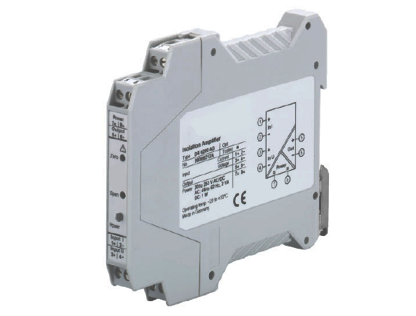isolation amplifier
Isolation amplifiers galvanically separate input signals from output signals and separate smaller signals from underlying DC voltage or from low- frequency AC voltages. They are called isolation amplifiers because they separate smaller AC voltage signals, which are on a DC voltage or on a low-frequency AC voltage such as the mains voltage, from the underlying voltage.
With isolation amplifiers, the separated small signals can be amplified potential-free and used as measurement signals or for other purposes. They provide both a separation of the signals and a galvanic potential separation.
Isolation amplifiers combine galvanic isolation with amplification. Galvanic isolation can be achieved with inductive coupling with a transformer, capacitive coupling with capacitors, or via Hall sensors. In optical isolation amplifiers, the galvanic coupling is done with optoelectronic coupling with light emittingdiodes and photodiodes. This is the method used in optocouplers. To decouple unwanted frequencies such as the mains frequency, isolation amplifiers can be equipped with high-pass filters that block the low-frequency signals and allow the higher-frequency signals to pass.
Isolation amplifiers are used, among other things, where there is a risk of high voltages, such as in medical equipment. Furthermore, they are used as measuring amplifiers for the separation of smallest superimposed alternating voltages or in case of measuring interference caused by hum loops.

